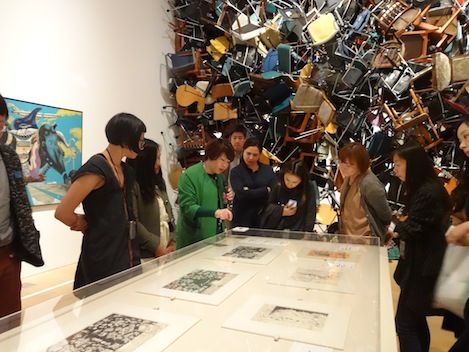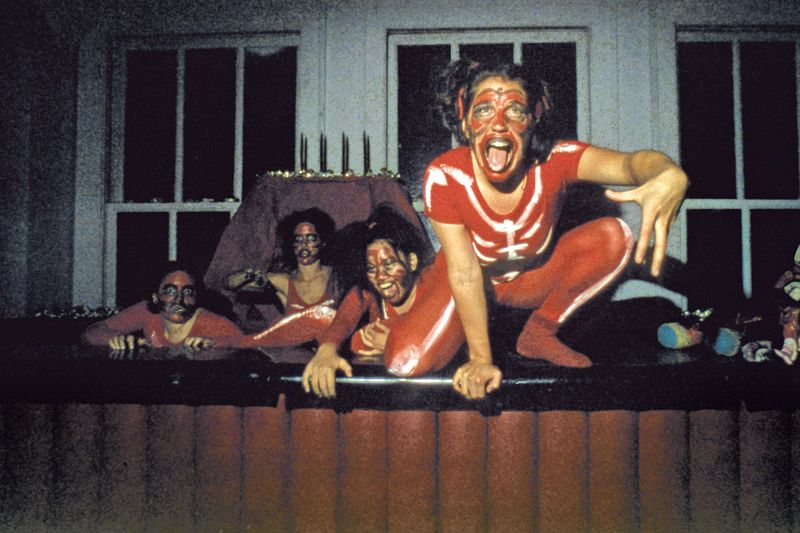Curator Steven L. Bridges developed this proposal during the Fall 2010 Curatorial Intensive in New York.
The Public Works Administration is an ongoing experimental enterprise that facilitates the development and implementation of artists' projects in the public realm. Through the creation of partnerships and by providing the necessary resources, artists will have the opportunity to activate processes of social and cultural awareness that will further permeate the urban imaginary of the city of Chicago. By encouraging artists as well as participants to explore the spaces and places in which they inhabit, the Administration seeks to identify new potentialities, to open up space and time for the expression of a multitude of viewpoints and voices, and question our very understanding of community in a pluralistic, democratic society.
Starting in 2011, the Public Works Administration will develop one public art project each year through the implementation of an artist residency program. The opportunity to participate in the residency will be open to national and international artists alike. The selected artist—if he or she is not already operating locally—will be invited to visit Chicago at least once for preliminary discussions as to the nature of the project, as well as to familiarize themselves with the city, its cultural idiosyncrasies, possible project sites, and so on. As the parameters of the project further take form, a large part of the Public Works Administration curatorial role will have to do with the establishment of relevant partnerships with and between Chicago organizations (such cultural groups, youth organizations, neighborhood alliances, businesses, etc.), thereby drawing specific constituencies of the local scene into the project’s fold, as well as further weighting the project with the stakes and claims of Chicago residents.
The resulting projects, co-produced and co-ordinated by the Public Works Administration, will be purposefully ephemeral in nature, fleeting yet impactful in their very timeliness. The projects will be process-oriented, rather than product-oriented, allowing for different manifestations of the project to take on lives of their own after their official culmination. As ephemeral, spatiotemporally-bound public art practices, the Public Works Administration will work with the participating artist(s) to develop projects that, at their core, intersect and intervene within the socio-politico-economic milieu of Chicago, identifying pertinent issues that relate to both the artist’s own artistic repertoire as well as to the daily lives of Chicago residents. These projects will thus also be more akin to the fleeting nature of democratic values as exercised in Chicago, speaking to and relating the very pluralism of the Chicago urban environment.
Some examples of the kinds of projects that the Public Works Administration is interested in developing are as follows: Chicago-based artist Jan Tichy has for a long time engaged with the social and political issues surrounding contested sites. He often uses existing architecture or recreates such architecture and couples them with time-lapse light projections in an effort to draw attention to these sites as aesthetically charged objects with dark histories, frequently imbued with forms of trauma and oppression. Tichy has developed a number of projects dealing with the issue of low-income housing in the city of Chicago, paying special attention to the histories of public housing in Chicago and to the ongoing erasure and gentrification of these neighborhoods in recent years.
Canadian artist Althea Thauberger’s site-specific events convey a sense of her penetrating insight and ability to open up spaces of criticality that are multidirectional and open-ended. Such events also take issues of gentrification and displacement as core ideas, but through more theatrical and performative display techniques, she invites various constituencies to “act” out their identities, personal-biases, daily lives. The ongoing transformation of Chicago’s various neighborhoods, as well as the role of the arts in these processes of transformation, are ripe for investigation by an artist with such poetic sensibility and biting intellect.
Additionally, the Danish artist Jens Haaning has created a number of works around the issue of immigration, particularly as it relates to the immigration of Arabic and Muslim peoples to European countries. Through his use of culturally-specific references to language and imagery, Haaning’s projects are successful in opening up dialogue about such issues, including the racial segregation of these immigrant populations, and growing racial tensions between locals and non-locals. This issue is also relevant to the Chicago imaginary, and perhaps even more so the immigration of Central and South American peoples to the USA, which could be a very interesting extension of Haaning’s artistic practice along a similar vein but with inherent and potentially provocative differences.
Currently in Chicago there are two major public art commissioning agencies: the City of Chicago Public Art Program and the Chicago Public Art Group. Both are highly reputable organizations, producing work that is valued through a civic understanding of societal betterment. The Public Works Administration, however, views social betterment not so much as the temporary construction of solidarity around the concept of community, but rather as a penetrating and conflictual process of questioning, self-reflection and recognition of the other.
In this way, the Public Works Administration will fulfill another important goal: the growth and expansion of the Chicago art ecosystem through the development of a curatorial practice as contributing to the local art infrastructure. In this way, the Public Works Administration will be an experiment, especially as it will implement a number of curatorial operatives simultaneously: over both short-term and long-term time spans. The individual projects will be curated through the selection of artists and their project coordination, and through the accumulation of each subsequent project a kind of history and identity will be created that embodies an extended curatorial approach, adding new chapters to the already rich history of public art practices in the city of Chicago.
Furthermore, much of the work initiated by the Public Works Administration will speak to the implicit belief within the genre of public art that the artistic strategies and methodologies for art-making can be more democratic, or can be akin to the exercising of democratic processes and values. However, this putting into motion of democratic principles is highly contingent on the very essence of the particular project in question, and so the democratic nature of public art should not be lauded for its over-generalized democratic value in society.
This democratic idealism that equates “public” with the notion of being “for the people, by the people,” and with a short extension, for the betterment of society at large is something that remains difficult to truly ascertain and unrealistic to even attempt to do so, particularly as democratic values and perspectives are increasingly pluralistic and even conflictual in both their visual and vocal manifestations. Thus, a public art practice that is subservient to a generalized survey of social consensus is problematic in nature, and so much of what is approved for display in public space is very much rendered as such.
Therefore, through this proposal, the Public Works Administration intends to further expand the notion of public art as it relates to the city of Chicago, along with the art ecosystem in Chicago, in order to test and question the democratic potential of public art practices and how the residents, tourists, passers-by—that is, the so-called public—relate to and find meaning in diverse and divergent artistic practices.
Learn More
For more information about the Public Works Administration, please contact Steven Bridges at steven.l.bridges@gmail.com. For more information about the Curatorial Intensive, please email info@curatorsintl.org






